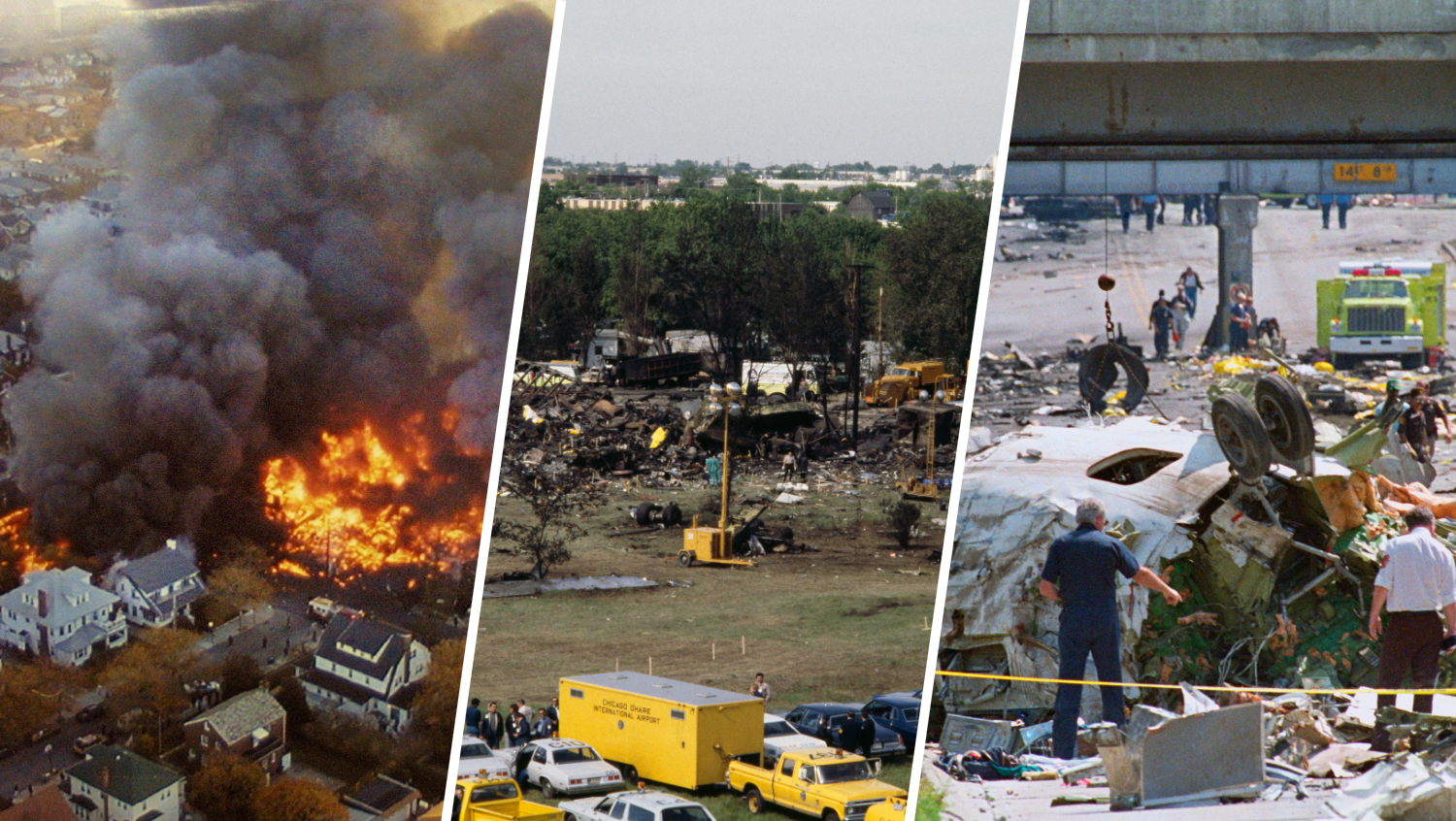NBC 5 Investigates found at least 16 complaints in NASA’s Aviation Safety Reporting System dating back to 2006 where pilots referenced near misses with helicopters or other aircraft while approaching Reagan National. Bennett Haeberle reports.
For at least two decades, pilots have complained about near misses with helicopters and other aircraft in the congested airspace above Reagan National Airport, according to an NBC 5 Investigates review of complaints lodged with NASA's Aviation Safety Reporting System.
The complaints are not necessarily investigated or corroborated by the federal aviation authorities but do underscore concerns raised by the pilots themselves about airspace congestion at one of the nation's busiest commercial runways in DCA.
According to authorities, 67 people died Wednesday night when a Black Hawk helicopter collided with a regional American Airlines jet over the Potomac River as the jet made its final approach. The cause of the midair collision remains under investigation by the Federal Aviation Administration and the National Transportation Safety Board.
The collision marked the deadliest commercial airline crash in the U.S. in more than 20 years and has quickly renewed national conversations about aviation safety.
NBC 5 Investigates found at least 16 complaints in NASA's Aviation Safety Reporting System dating back to 2006 where pilots referenced near misses with helicopters or other aircraft while approaching Reagan National. The figures could be an undercount given that pilots submit their experiences to the NASA dataset voluntarily. Their identities were removed.
In 2006, a pilot wrote that they had to make a "missed approached" after the air traffic control tower alerted them of a military helicopter over the river, adding, "Why does the tower allow such nonsense by the military in such a critical area?"
In 2013, another pilot described another near miss with a helicopter, writing: "There are always numerous military and government helicopters running up and down that river at all times of day and night…"
He later wrote that the helicopter "passed 200 feet below us…" and that the air traffic control tower never called out the traffic beyond the first notification.
The same pilot wrote that when he pressed the controller in charge at the tower, he admitted that it was a military helicopter flying from/to Ft. Meade and that he was flying "a little higher than normal." The pilot went on to write: "I cannot imagine what business is so pressing that these helicopters are allowed to cross the path of airliners carrying hundreds of people! I do not understand why they are not crossed IN-BETWEEN arrivals."
In 2015, a pilot filed a complaint about having to land on Runway 33, the very runway the American Airlines flight was attempting to land on before Wednesday's midair collision.
Feeling out of the loop? We'll catch you up on the Chicago news you need to know. Sign up for the weekly Chicago Catch-Up newsletter.
In this complaint, the pilot wrote he "came within very close contact of another aircraft," adding "there was an extreme lack of communication between DCA tower to our flight or DCA tower to the associated helicopter…"
And just last April, another pilot wrote he did not see a helicopter that was "300 feet below us," adding, "we never received a warning of the traffic from air traffic control so we were unaware it was there."
A source told NBC News that staffing in the DCA tower on Wednesday was not normal for the amount of traffic and time of day, according to a preliminary FAA safety report on the collision. The same source says that the DC tower usually has a controller who focuses on helicopter traffic. But FAA's guidelines allow for that position to be combined with another controller – which is reportedly what happened at the time of the crash.
"Their flight path should've been hugging the east bank of the Potomac River, so their flight should not have been in the path of that landing aircraft," said U.S. Senator Tammy Duckworth, a Democrat from Illinois.
Duckworth, a former military pilot who has flown Black Hawk helicopters before, told reporters that she was briefed by the both the FAA and NTSB early Thursday. She said the helicopter was made aware of the regional commercial jet and was told to go behind it. It was not immediately clear what led to the midair collision.
The Illinois U.S. Senator, who sits on the aviation subcommittee, told NBC 5 Investigates she has concerns about the previous complaints we referenced, adding it's something lawmakers will look into.
"We will be looking at that. Near misses is a misnomer. We should be calling them near collisions. And this is happening across the country," she said, adding that lawmakers will also be discussing additional training time for military pilots as well as federal funding to add additional air traffic controllers.



